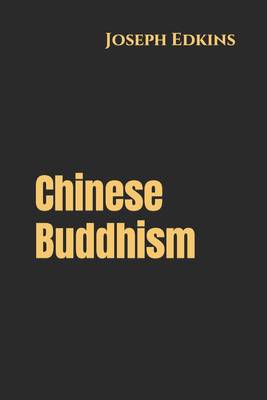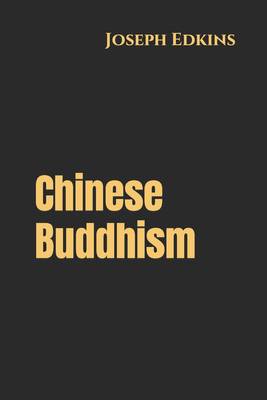
- Afhalen na 1 uur in een winkel met voorraad
- Gratis thuislevering in België vanaf € 30
- Ruim aanbod met 7 miljoen producten
- Afhalen na 1 uur in een winkel met voorraad
- Gratis thuislevering in België vanaf € 30
- Ruim aanbod met 7 miljoen producten
Zoeken
€ 21,45
+ 42 punten
Uitvoering
Omschrijving
The number of Buddhists in the world has been much exaggerated. Formerly it was stated to be four hundred millions; and this incredibly large estimate led to careful consideration. Dr. Happer, resident for more than forty years in Canton, thinks that in China the tonsured Buddhist priests are twenty millions in number, and he declines to allow that the rest of the Chinese can be rightly called Buddhists. Dr. Gordon, of Japan, a good authority who has carefully studied Japanese Buddhism, considers that it would not be fair to represent only the tonsured Buddhists as followers of the Buddhist religion in Japan; yet it is a fact that few of the laity in China and Japan make and keep Buddhist vows. The same is true of Tauism. The most of the population of China claim to be Confucianists, and conform occasionally to Buddhist and Tauist ceremonies. The rich Chinaman calls himself a Confucianist, and therefore he must count as such. But he subscribes to the rebuilding of Buddhist temples and pagodas, because he thinks the act will bring him prosperity. He worships Tauist idols more than those in Buddhist temples; but he adores the Buddhist images also on certain occasions. He conforms to three religions, but on the whole he is made by ancestral worship properly speaking a Confucianist. His religious faith is a sad jumble of inconsistent dogmas. As to becoming a tonsured priest, he never thinks of it, unless he grows weary of the world and aspires to monastic life as a relief from social cares and domestic sorrow. Let us include lay Buddhists who keep their vows at home, and rate the whole number of those Chinese who take Buddhist vows, monastic or lay, at forty millions. The Tauists may be roughly estimated at fifteen millions, and the Confucianists at 320 millions. It is ancestral worship that gives the Confucianists so large a preponderance. The schoolmasters are all Confucianists. None of the books used in education are Buddhist or Tauist. Of newly published works, ten per cent. may be Buddhist and ten per cent. Tauist. These include exhortations to virtue, and treatises urging to charity. There is no demand for Buddhist or Tauist books. Eighty per cent. of all books newly published count as Confucianist, or as belonging to general literature. Booksellers, as a rule, keep no Buddhist or Tauist books. On the whole, it seems better to allow the Chinese claim, and class 320 millions of them as Confucianists. To go to school is to become a Confucianist, and even those who have no book-learning worship their ancestors. Yet Buddhism is powerful in China by its doctrines. It has made the Chinese idolaters, and besides this it has taught them the wind and water superstition which has proved to be an effective barrier against civilised improvements and a most thorough hindrance to true enlightenment. For these two reasons, after all that can be said, still it is a Buddhist country, and the people are idolaters and the victims of Hindoo superstition. The art too is Buddhist. The favourite subjects of artists are Buddhist or Tauist. Here the ascetic element prevails, and that familiarity with nature which marks the true Buddhist. The lion, a Persian animal, is the symbol of victory, and is a common ornament in temples as symbolical of Buddha's success in argument. The lotus also is symbolical of Buddha's appearance as saviour. He rises suddenly from the sea of misery, an object of beauty to thousands who are rescued by his powerful teaching from their hopeless delusions. The lovely flower, the padme, is an indispensable ornament to Buddha's throne. Buddhism taught the Chinese and Japanese artists to paint animal and vegetable forms and carve them in temples. Through this medium ideas of Assyrian and Greek art found their way to these Eastern races, and elevated them.
Specificaties
Betrokkenen
- Auteur(s):
- Uitgeverij:
Inhoud
- Aantal bladzijden:
- 382
- Taal:
- Engels
- Reeks:
- Reeksnummer:
- nr. 166
Eigenschappen
- Productcode (EAN):
- 9798631068001
- Verschijningsdatum:
- 27/03/2020
- Uitvoering:
- Paperback
- Formaat:
- Trade paperback (VS)
- Afmetingen:
- 152 mm x 229 mm
- Gewicht:
- 557 g

Alleen bij Standaard Boekhandel
+ 42 punten op je klantenkaart van Standaard Boekhandel
Beoordelingen
We publiceren alleen reviews die voldoen aan de voorwaarden voor reviews. Bekijk onze voorwaarden voor reviews.











